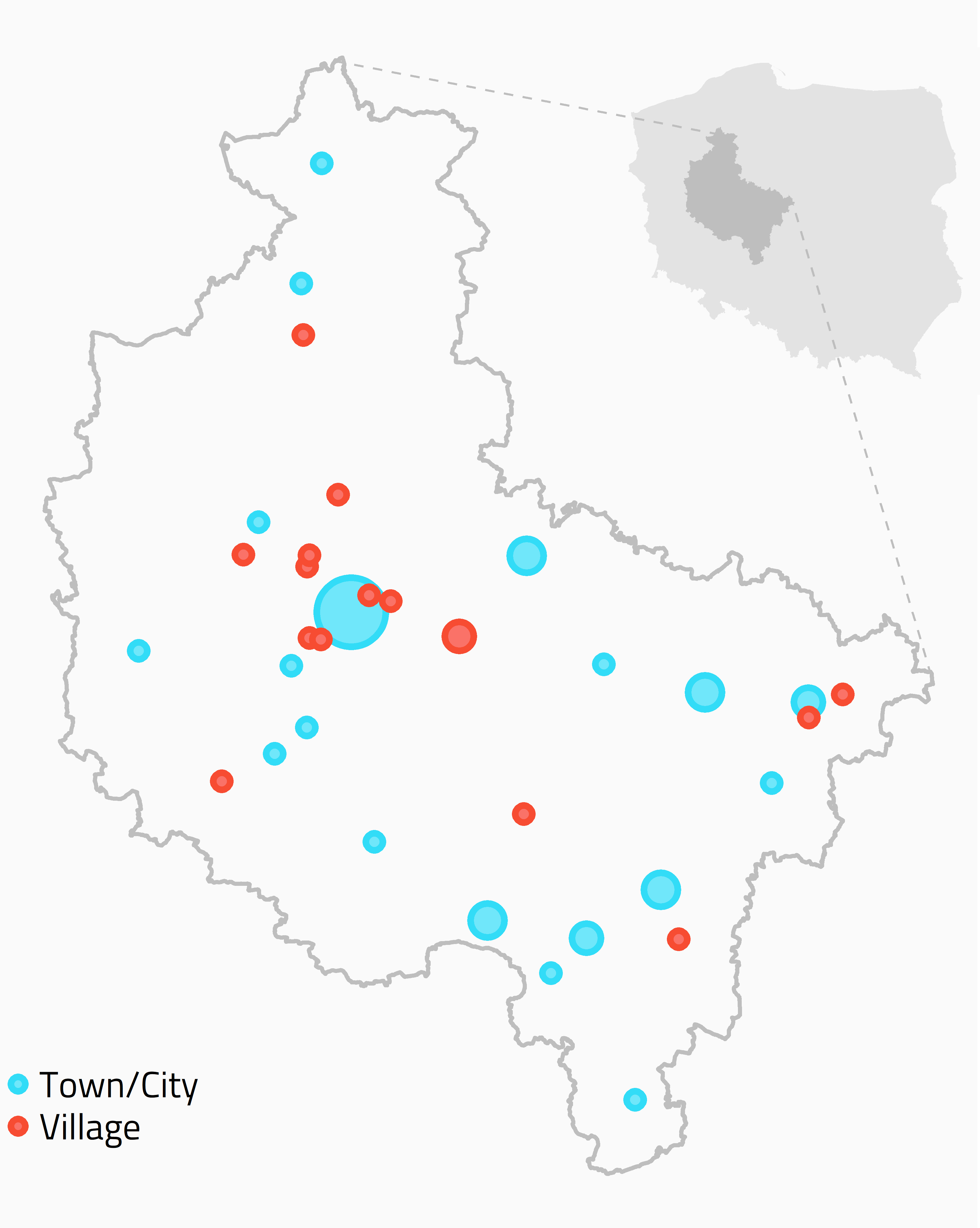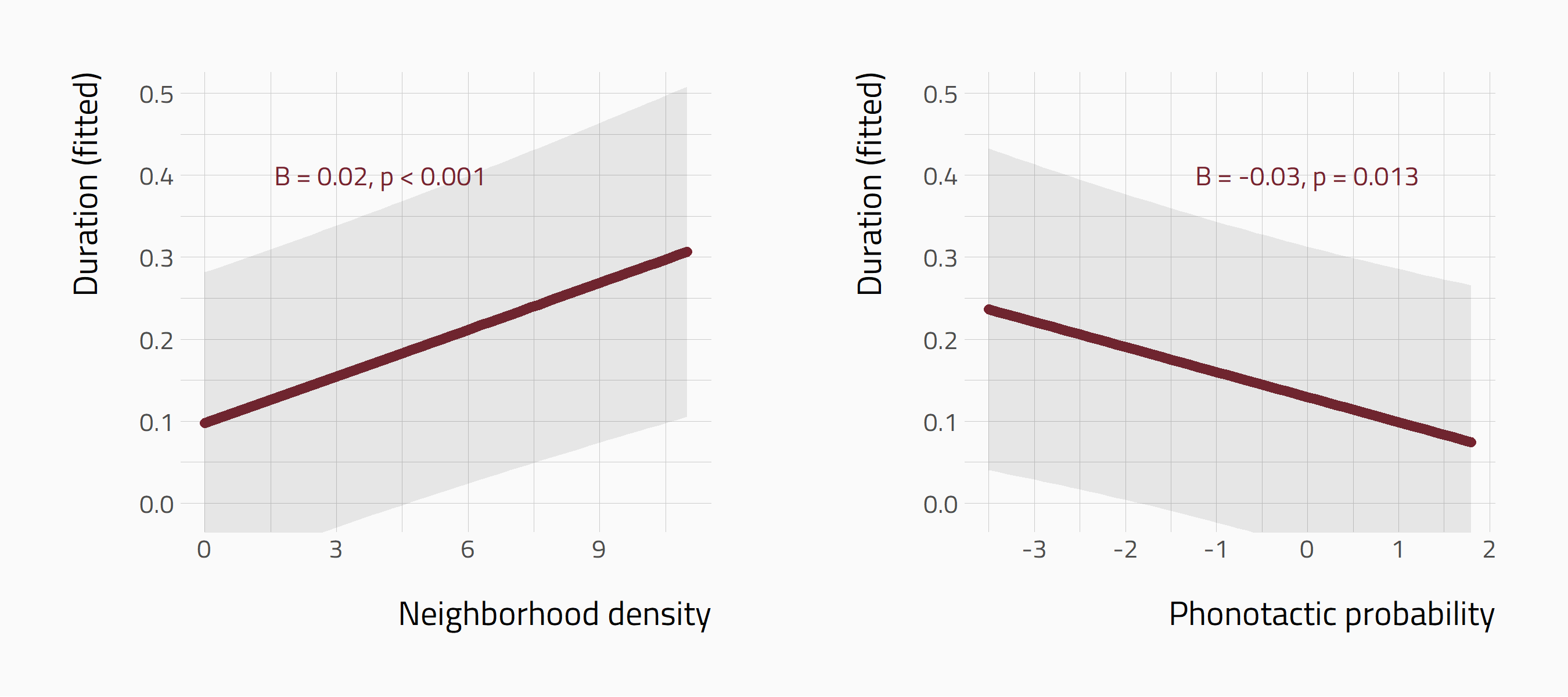Durational variation in Polish fricatives provides evidence for hybrid models of phonology
Kamil Kaźmierski
Faculty of English at AMU in Poznań
ICPhS :: August 9th, 2019
kamil.kazmierski@wa.amu.edu.pl
wa.amu.edu.pl/wa/kazmierski_kamil
Neighborhood density vs. phonotactic probability
Spoken-word recognition (Vitevitch & Luce 1998):
Higher neighborhood density → Slower recognition (lexical effect)
Higher phonotactic probability → Faster recognition (sublexical effect)
Both lexical and sublexical effects → support for hybrid phonology (Pierrehumbert 2002)
Do these effects have consequences for the acoustics of speech production?
Neighborhood density
No. of lexemes created by removal, addition, or substitution of a single phoneme
Low: więc /vjɛnt͡s/ 'therefore'
- removal: wiec /vjɛt͡s/
- addition: Ø
- substitution: Ø
High: stałe /ˈstawɛ/ 'constant'
- stał /staw/
- stałeś /ˈstawɛɕ/, stałem /ˈstawɛm/
- stare /ˈstarɛ/, stale /ˈstalɛ/, stała
/ˈstawa/, stało /ˈstawɔ/
Phonotactic probability
Sum of log frequencies of diphones across the corpus (Vitevitch & Luce 2004)
Low: chcą /xt͡sɔw̃/ 'they want'
- xt͡sɛ, xt͡sɛʂ
- Ø
High: wie /vjɛ/ 'she/he/it knows'
- vjɛɕtɕ, vjast, vjɔzɛ, vjɛm, vjɛmɨ, ...
- bjɛda, zjɛm, pjɛs, ...
Research question: Are the differential effects of phonotactic probability and neighborhood density present in production?
Motivation: Perception-production symmetry? Language specificity? Beyond lab speech?
Predicition: High neighborhood density will increase and high phonotactic probability will decrease fricative durations.
Method
Data
Greater Poland Spoken Corpus
68 Speakers; 69,720 Word tokens
(Kaźmierski, Kul & Zydorowicz in press)

Data extraction
 Transcripts hand-aligned at breath-group level in Praat (Boersma & Weenink 2016)
Transcripts hand-aligned at breath-group level in Praat (Boersma & Weenink 2016)
 Corpus creation, management and querying with LaBB-CAT (Fromont & Hay 2012)
Corpus creation, management and querying with LaBB-CAT (Fromont & Hay 2012)
→ Force-aligned at word and phoneme level
→ Fricative initial (ɕ ʂ ʑ f s v x z) C₁C₂V...content words
Model architecture (N = 2,850)
Mixed-effects linear regression with lme4 (Bates et al. 2015) in (R Core Team 2019)
- Response:
Fricative duration
- Predictors of theoretical interest:
Neighborhood density,Phonotactic probabilityPhonological CorpusTools (Hall et al. 2018)
- Control predictors:
Average speaking rate,Rate deviation,Gender,Word duration,Frequency,Prefix,Stress
- Random terms:
(1 | Fricative),(1 + Neighborhood density + Phonotactic probability | Speaker)
Results
Divergent effects of Neighb. dens. and Phon. prob.

Conclusions
Within the same dataset:
neighborhood density effect → Lexical level
phonotactic probability effect → Sublexical level
the presence of both → Hybrid model of phonology (Goldinger 2007; Pierrehumbert 2002; Ernestus 2014)
Thank you!
Neighborhood density and phonotactic probability show differential effects on duration of Polish fricatives

This research was supported by National Science Center (Poland) grant no. UMO-2017/26/D/HS2/00027
kamil.kazmierski@wa.amu.edu.pl
Remaining fixed effects in the model
| Predictor | B | p |
|---|---|---|
| Rate deviation | -0.038 | < 0.001 |
| Average rate | -0.049 | < 0.001 |
| Gender Male | -0.018 | 0.557 |
| Word duration | 0.920 | < 0.001 |
| Frequency | 0.005 | 0.627 |
| Prefix TRUE | -0.117 | < 0.001 |
| Stress TRUE | 0.078 | < 0.001 |